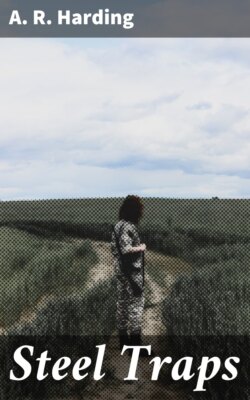Читать книгу Steel Traps - A. R. Harding - Страница 10
На сайте Литреса книга снята с продажи.
A WELL MADE TRAP.
ОглавлениеThe "bows" or holes in the spring must be of a proportion to properly fit the jaws and have such a "twist" as will allow them to lie flat when set, and the temper must be so moderated as not to be brittle or "high", otherwise they may break if sprung without anything between the jaws. For it is well known that it is a much harder strain on any trap to be sprung thus than to snap on to the leg of an animal.
Another very important thing is to have the strength of the spring proportioned to the size of the trap, for an excessively stiff spring is more apt to break the leg bone of the animal and increase the liability of "legging" as the trappers call it, while a very weak spring may allow a vigorous animal to draw its foot out, especially if caught low down.
And last but more important than anything else, the spring must have just the right temper, for a bad tempered trap spring is like a bad tempered wife, a worse than useless encumbrance. And do not let the tyro imagine that it is easy to temper a trap spring, for it requires a long experience and very expensive and carefully studied conditions and apparatus to produce anything like uniform results.
Few persons realize the unusually trying conditions under which a trap spring has to do its work, and it is safe to say that no mechanical contrivance performs its functions with greater precision than a well made and tempered trap spring.
A No. 1 spring weighs less than three ounces and will exert a force of between 70 and 80 lbs., and one of these has been known to remain under strain for over thirty years and then spring as promptly as though just set.
The jaw of a trap should have a good wide bearing surface, otherwise it will be apt to break the animal's leg bone, a calamity always to be avoided, especially in dry land trapping, for as before remarked "legging" is thus likely to follow. Anything like a sharp cutting edge or a saw tooth is especially objectionable, for our object in catching an animal is to obtain its fur and not to amputate its limbs. As a prevention of "legging" the Nos. 81, 91, 91½ traps, described elsewhere, are especially designed. The pintle or end bearings of the jaws should fit loosely in the holes to allow for rusting and a little freezing, and there should also be a slight end play for the same reason.
The weight and strength of a jaw should be sufficient to prevent it from being sprung or bent enough to throw it out of its bearing when it is set or when sprung by the animal.
Much diversity of opinion obtains regarding the proportionate size of the pan or treadle. Some trappers like a large pan similar to that used in the Jump trap, but it is safe to say that the greater majority, especially among the old and experienced trappers, prefer the smaller sizes, and for obvious reasons. When an animal steps on a small pan he is caught to stay, but with a large one he may be "nipped" or his foot may be thrown out altogether. At any rate his education has been immensely advanced and it will take a trapper with a "long head" to get him into a trap next time.
The pan should fit loosely in its bearing for as is well known, rusting increases the size of a piece of iron and as there are four surfaces to rust in a pan bearing, ample room must be left.
